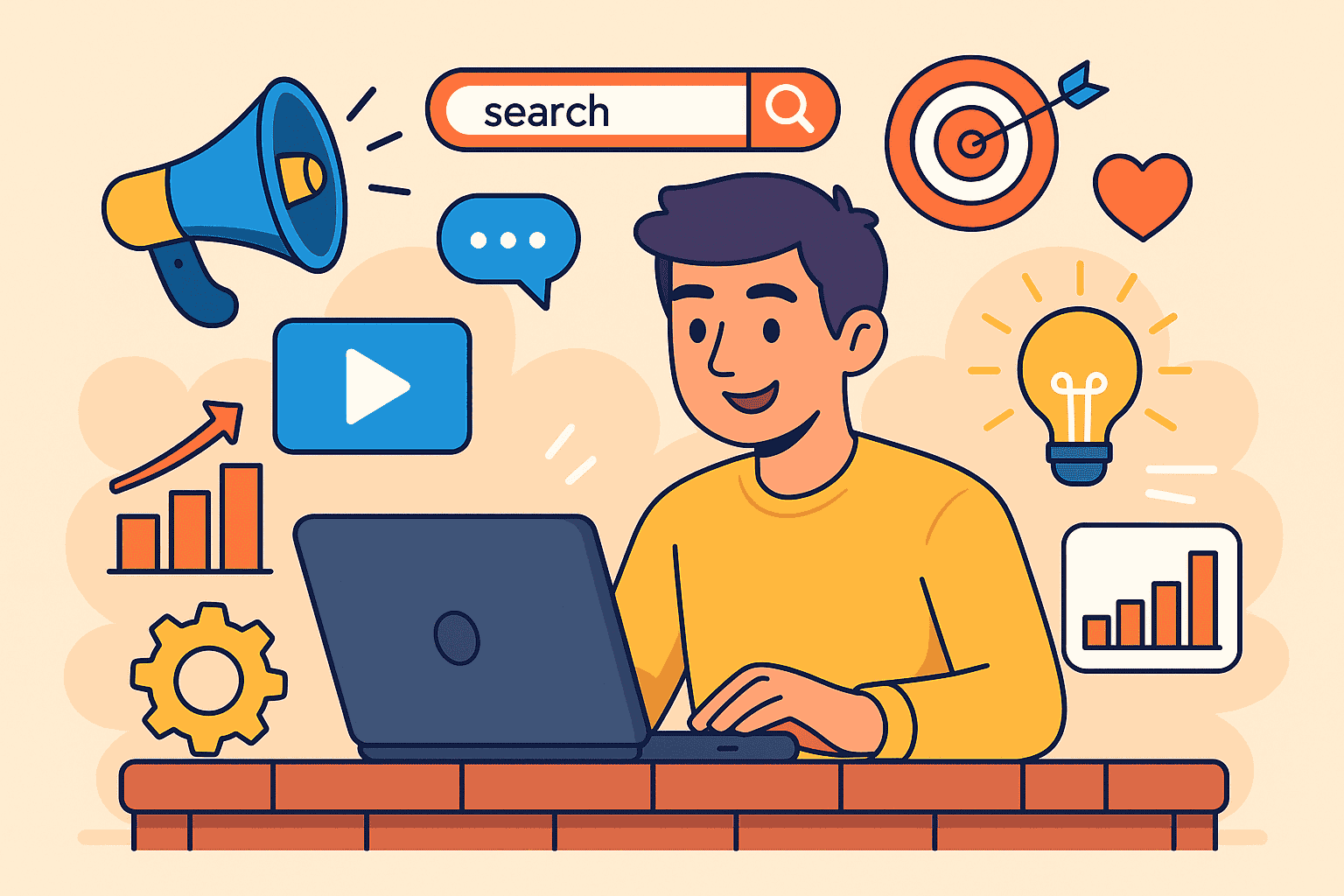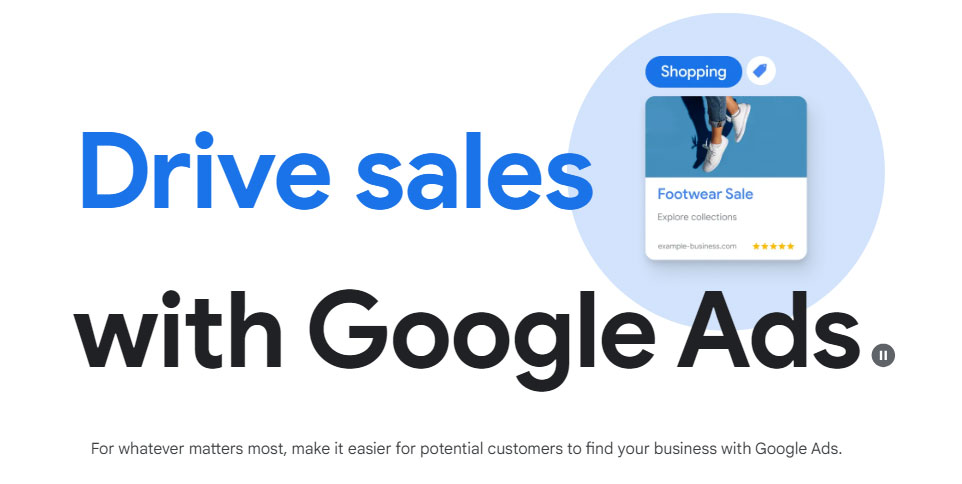So, you’ve built a terrific website. It’s visually stunning, easy to navigate, and lightning-fast, well under that dreaded 3-second mark where most people bounce. You’ve done a fantastic job so far.
Now it’s time to take the next step: digital marketing.
Maybe you’ve already explored it. Maybe you’ve been burned either by a high-priced, jargon-heavy “expert” or a bargain-basement promise that sounded too good to be true. Big-box providers like Google or DEX keep knocking on your door. And amid the noise, you’re left wondering:
What works? What’s worth it? And why is pricing all over the place?
Let’s cut through the confusion and bring some clarity to digital marketing.
Why Digital Marketing Matters
Traditional advertising like TV, radio, print, outdoor still exists, but its dominance has faded. What hasn’t changed is this:
When the right message meets the right medium and audience, marketing works.
Take this simple example:
Mike’s Neighborhood Car Wash drops flyers on windshields at local shopping centers five weekends in a row. Week 1, drivers are annoyed and toss the flyer. By Week 3, they’re reading the offer. By Week 5, they’re showing up with coupons. Repetition works when matched with the right audience and message.
Every medium has a strength. But digital marketing dominates today for one major reason:
The way we shop, search, and decide has fundamentally changed.
We’ve moved from brick-and-mortar to online, from asking neighbors to reading reviews, from passively receiving ads to actively researching products on our phones. Digital is no longer optional. It’s essential.
The Rise of Digital Advertising
Since the 1980s, the internet has radically reshaped how businesses advertise. By 2019, Google became the #1 ad revenue generator with $113 billion from digital ads. Facebook followed close behind. Now, Google made $264.59 billion ad revenue in 2024.
In the U.S., digital ad revenue surpassed traditional media for the first time in 2019. That shift isn’t slowing down.
Digital marketing is the shortest path between you and your customers.
Core Types of Digital Marketing
Let’s break down the major channels and what each one does best:
1. Pay-Per-Click (PPC) Advertising
PPC is one of the most direct and powerful digital tools. You only pay when someone clicks on your ad.
- When someone types a search into Google, ads appear at the top of the results.
- These ads are highly targeted by keyword, location, time, and more.
- Competitive markets cost more per click (e.g., “personal injury lawyer Las Vegas” may be $100+ per click, while “shoe store” might cost $2).
Key advantage: You’re reaching people actively shopping for what you offer.
Caution: PPC is addictive and easy to overspend without a smart strategy.
2. Search Engine Marketing (SEM)
Often used interchangeably with PPC, SEM refers broadly to paid ads on search engines like Google or Bing.
- Your ads appear at the top of the page when people search relevant terms.
- These often look like regular (organic) results but are marked with an “Ad” tag.
- You target keywords, customer demographics, even competitor brand names.
3. Search Engine Optimization (SEO)
SEO is all about showing up in the organic (unpaid) results below the ads on a search engine results page (SERP).
To rank well, your website needs:
- Fast load times and mobile-friendliness
- Relevant page titles and keyword-rich copy
- Optimized image tags and meta descriptions
- High-quality backlinks and local citations
- Fresh, regularly updated content
Google values proximity, relevance, and prominence, plus overall site authority.
4. Local SEO
If you’ve ever searched for “restaurants near me,” you’ve seen the Google Map Pack in action.
To show up there, you need:
- A complete and optimized Google Business Profile
- Accurate and consistent contact info across the web
- Local backlinks, reviews, and citations
- Ongoing activity and monitoring
5. Social Media Marketing (SMM)
Facebook, Instagram, and X (formerly Twitter) dominate the social media landscape, especially in the U.S.
Your business uses these platforms to:
- Build community through engaging posts, videos, and stories
- Share content that encourages likes, comments, and shares
- Run highly targeted ad campaigns filtered by interests, behaviors, and demographics
6. Email Marketing
Still going strong, email marketing is an efficient way to:
- Promote sales or services
- Nurture loyalty
- Provide value to current and prospective customers
Email lists are built organically or purchased. Modern tools let you track open rates, click-throughs, and conversions.
7. Display, Banner, and Native Ads
These ads appear across websites, apps, and platforms:
- Banner ads: Top/bottom of pages
- Display ads: Sidebars and other placements
- Native ads: Ads designed to look like content (e.g., “sponsored stories”)
Click-through rates are low, but they boost brand awareness. Native ads in particular are effective because they blend into the user experience.
8. Content Marketing
Rather than directly selling, content marketing builds trust by offering real value.
- Blog posts
- Videos
- Infographics
- Podcasts
- Case studies
- How-to guides
The goal: educate, entertain, or inspire and lead users back to your business naturally. Google also rewards great content with better search visibility.
Why Digital Marketing Works
The greatest strength of digital marketing is measurability. You track every click, every open, every interaction and adjust in real-time.
A Smarter Approach to Digital
Digital marketing doesn’t have to feel like a gamble. When you work with a partner who’s honest, strategic, and transparent, it’s not a guessing game but a growth plan.
At Notice U Marketing, we believe success is not a solo process. We’re here to help you make sense of the chaos, connect with your audience, and grow with purpose.
Call us today at (702) 472-8681 or send us an email at [email protected].







